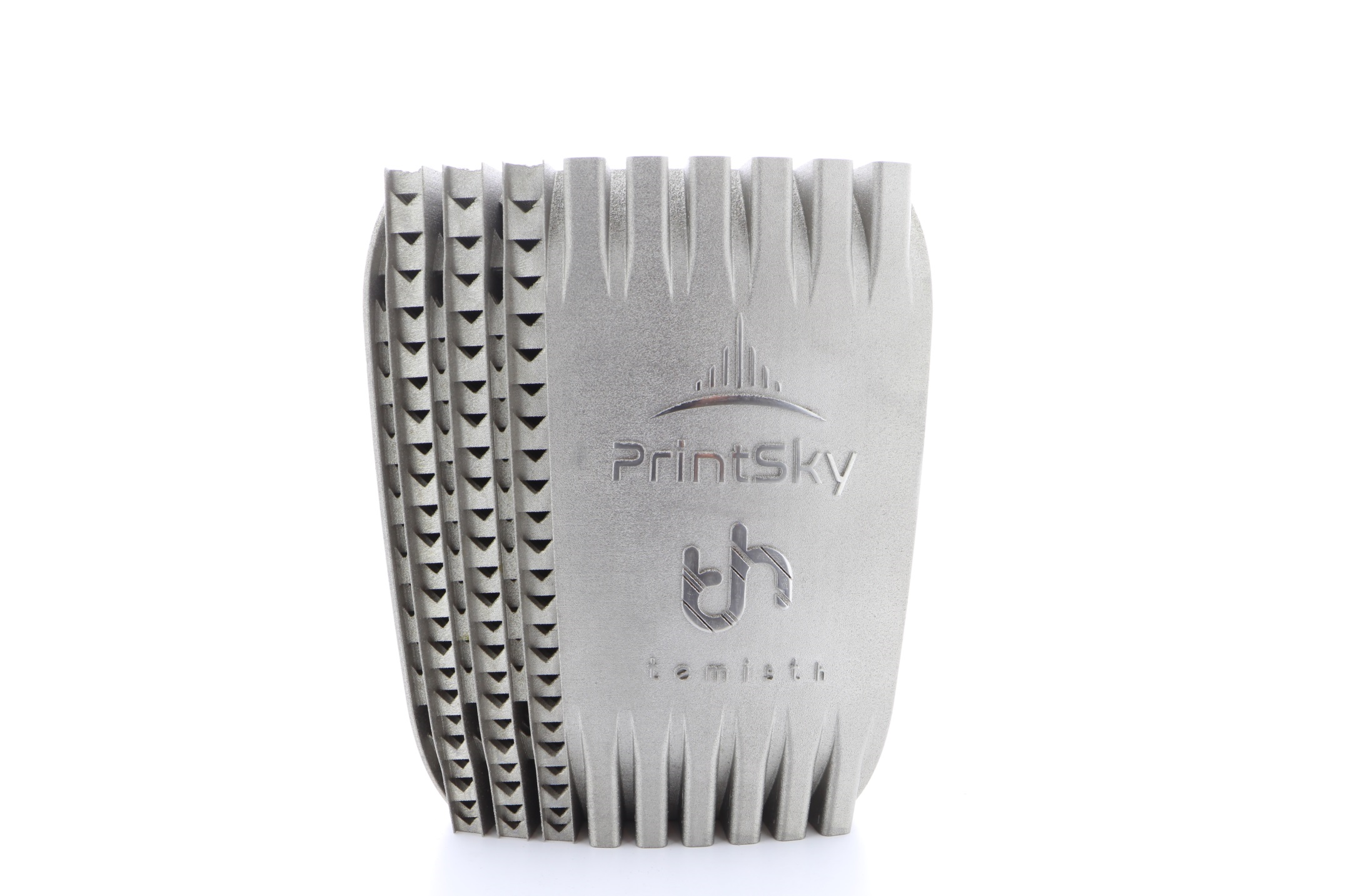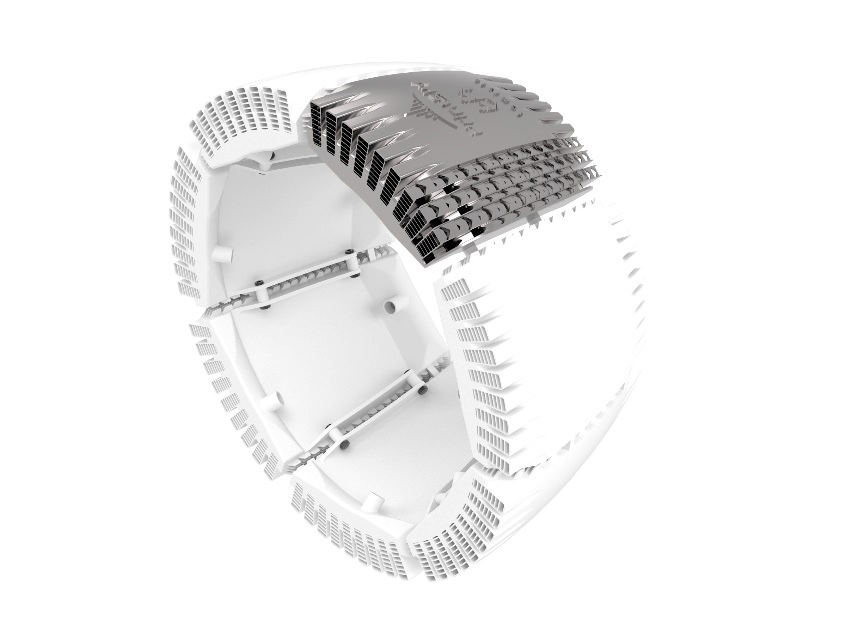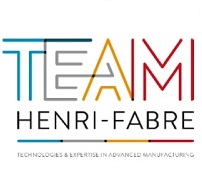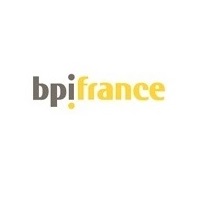HEWAM – Heat Exchanger With Additive Manufacturing
HEWAM project aims to develop a heat exchanger using all the potential of additive manufacturing. We propose a geometry that fits with a wide range of surfaces and volume used in aerospace industry. Double shape curve allows fitting with the curvature of aircraft engine as shown on the following pictures.
Moreover, thermal, fluid and mechanical constraints have been considered in the design in order to adapt the local geometry to the physical phenomenon.
The project is developed by the consortium Temisth, AddUp and Sogeclair.
AddUp designs, manufactures and commercialized multi technology metal 3D printer : Laser powder bed fusion (LPBF) and direct energy deposition (DED).
Sogeclair Aerospace is a mechanical engineering design office for the Aeronautics, Space and Defense industries.
Temisth is an independant company specialized in the development and the manufacturing of customized thermal solution using advanced manufacturing (Additive in metal or polymers, FSW, rapid casting etc.). By its expertise and skill on thermal issues, Temisth support companies from several domains to develop an innovative project from the idea up to the proof of concept. In 2022, Temisth is involved in the PRACCIIS project supported by TEAM Henri-Fabre and become a thermal component supplier (compact heat exchanger, heat sink, cold plate, tooling). The objective is to answer new demands on thermal managment of innovative applications such electrification or hydrogen uses etc.

Additive heat exchanger with additive manufacturing (HEWAM)
Aerospace industries have a wide range of thermal applications as well as air conditioning, brake cooling system, embedded cold plates for electronics, engine thermal management etc. In the future, with the increase of electrical systems on aircraft, thermal systems for electric engine or heat recovery on the APU will need more and more customized solutions in order to insure performances with light weight devices.

Boundaries conditions for HEWAM project
The objectives are to cool a liquid as oil entering the heat exchanger at 110°C with ambient air at -50°C. The mass flow rate of oil is fixed. Air mass flow rate is given by the dynamic pressure of the air flow arriving in the area of the HX and the pressure drop characteristics of the device. The objective is to remove 2200W of the oil circulation (32g/s ~2,4 L/min) on one modulus of the HX by ensuring enough air flow through the HX.
The material chosen for the design is Inconel 718. This material is heavier than aluminum by more than 3 times and is less conductive, however for additive manufacturing it presents more interesting characteristics. With Inconel, we can ensure thin wall (<0.5mm) without leakage and thin fins (0.15mm). Designing the heat exchanger with the good architectures allows obtaining similar mass and performances than aluminium AM cases.
AddUp, Sogeclair and Temisth have developed a specific methodology in order to ensure the thermal requirements with mechanical constraints and additive manufacturing feasibility.
The main physical issue on this heat exchanger is to ensure enough airflow inside the heat exchanger with high heat transfer coefficient. The methodology developed by the consortium leads to a specific design taking into account the variation of air temperature (from -50°C up to +25°C) and thus its density. We have thus increase channel width for limiting air acceleration and thus pressure drop. In order to maintain thermal performances, fins have an adaptative geometry along the air flow in order to consider air velocity and channel size changes.
CAD conception is respecting some AM rules and allows to perform mechanical simulation to check pressure proof/burst etc.

Mechanical and CFD simulation on HEWAM project
Iteration from CAD, CFD (Computational fluid dynamic) on an elementary channel and mechanical simulation have been carried out before arriving to the final concept:
AddUp Manager software ensures the feasibility of the manufacturing:
- Part orientation choice
- Support setting
- Laser strategy
- Process simulation
- Manufacturing launch
Finally, three heat exchangers have been printed on a FormUp 350 :

Production of 3 heat exchangers on FormUp machine
· Production volume : 350x350x350 mm
· Laser power : 2x500W
· Programmable layer thickness : 20 to 100 µm
· Scanning speed :10 m/s maximum
· Heating plate : 200°C
After the production, heat exchangers where tested on a customized test loop developped by Temisth. Results are succesfully fitted whith numercial simulation predictions.
Conclusions
The optimization has been made at several scale : Local optimization of channels with thin fins. Meso-scale optimization with a variation of fins pattern and channel size. Macro-scale optimization using the curved shape for a better system integration. Globally, the thickness available on this sample allows obtain an apparent porosity of about 90%.
The three samples were exhibited at Paris Airshow 2019 (Salon du Bourget).













